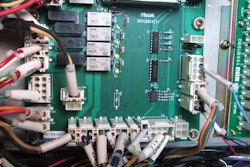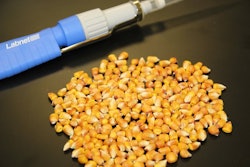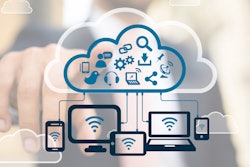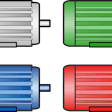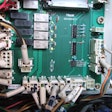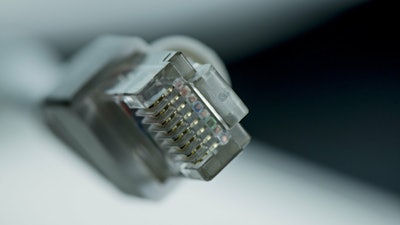
The digital divide, the division between individuals who have access to computers and high-speed internet and those who do not, is still blocking millions of Americans from working and learning at home, a year after COVID-19 forced the nation to operate online.
Why does the digital divide matter?
According to the Pew Research Center,over half of Americanssaid the internet has been essential to them during the COVID-19 outbreak.
The consequences for those who lack access to the internet, therefore, can be dire. Without access to the internet, individuals may not be able to receive the services, news and information, social interactions or employment opportunities that they need.
The consequences of the digital divide will only continue to worsen as more essential services, including vaccine scheduling, unemployment benefits applications and medical appointments, become primarily internet-based.
The numbers
In 2020, the Federal Communications Commission (FCC) reported that19 million Americanslack access to any broadband network. However, experts believe that the FCC has drastically undercounted this number. It is estimated that42 million Americansactually lack internet access, with157.3 million Americanslacking high-speed access.
When it comes to children, it is estimated that there are currently3.7 million studentswho lack internet access at home and 4.4 million students who lack consistent access to a computer. Without the ability to access online classes or learning materials, thesestudents are falling behind.
Although the pandemic has exasperated this issue, students without proper internet access have been struggling to keep up in school for years. According to the Pew Research Center,17% of teenage studentsin 2018 were sometimes or frequently unable to do their homework assignments because they lacked a reliable internet connection or computer. This number increased to 25% for black students in the U.S.
The digital divide, therefore, has devastating effects on both adults and students. The divide prevents millions of adults from being able to properly participate in the economy and millions of children from receiving the educational opportunities they are entitled to.
What factors contribute to the digital divide?
The digital divide exists due to two problems: accessibility and affordability. For this reason, rural residents and low-income households are the primary demographics of people who lack internet access.
Accessibility:The digital divide between rural and urban residents is particularly challenging to solve because the expansion of rural broadband is an expensive and lengthy process. In the past five years, the federal government has invested billions of dollars in expanding rural broadband access. Despite these investments, however, approximately14.5 million rural residentsin America still lack broadband access. That is nearly a quarter of America’s rural population.
Affordability:Millions of Americans who live in urban areas and have access to several internet providers, however, still lack internet access. According to thePew Research Center, over half of Americans who lack internet access say that is because it’s too expensive. Households with an income of $30,000/year. have a particularly hard time affording internet service. For instance, households with an income over $75,000/year. are 20x more likely to have access to the internet than households with an income under $30,000/yr. As of 2018,43.7% of low-income householdslacked access to high-speed internet.
Studies have estimated the average low-income household can afford to pay $10/month. for internet service. However, theaverage cost of internet servicein the U.S. is over $60/month. This is a major barrier the FCC is working with Congress and state agencies to overcome.
There areoptions for low-income householdsto receive broadband service, including income-based government and provider programs.
What speeds do Americans need for adequate internet access?
The FCC’s standard for high-speed internet is 25 Mbps download speeds and 3 Mbps upload speeds. However,according to the FCC, over 90% of Americans with internet access have at least 100 Mbps download speeds.
In fact, 85% of Americans receive as high as 250 Mbps. Therefore, the FCC’s multi-billion dollar investment in broadband expansion for rural and low-income families will still result in a major divide when it comes to internet speeds as there is a significant difference in 25 Mbps, 100 Mbps and 250 Mbps.
例如,一个完整的家庭可能struggle to work and learn remotely with just 25 Mbps. In contrast, 100 Mbps is sufficient for two to three family members to share and 250 Mbps is sufficient for five to six family members to share.
What is being done to solve the digital divide?
Although the majority of Americans recognize that internet access has been essential amid the pandemic, most (62%)不相信政府的响应nsibility to ensure connectivity for all. Nevertheless, the government included $7 billion in the coronavirus relief package in December 2020 to help promote broadband connectivity. Of this $7 billion, $300 million will go toward rural broadband expansion and $3.2 billion will help补贴费用of broadband internetfor low-income families.
FCC initiatives, tech innovations to close the gap
Some of the primaryFCC initiativesto help close the digital divide include providing funds to support remote learning during the pandemic, establishing theDigital Opportunity Data Collectionto improvebroadband availability mappingand better identify gaps in internet coverage across the nation and investing over $9 billion over the next decade to expand rural broadband access.
Expanding rural broadband access in the most efficient way possible will require using fairly new technology. Some of the leading technologies for expanding both fixed and mobile broadband access to rural areas will be throughTV white space(TVWS) and automated aerostat super towers.
TVWS is the unused broadcasting frequencies between television channels and it will help provide rural fixed broadband access because it is cheaper and faster to deploy than traditionalfiber internet. Automated aerostat super towers are a better alternative to cell towers in providing rural mobile broadband access because they can cover a much wider area.
Allconnect的保持联系Resource Centerfor the latest developments on bridging the digital divide.
Related Reading
Frontier Coop Partners on Rural Broadband
Coalition to Close America's Digital Divide
Land O'Lakes, Microsoft Form Alliance to Pioneer Tech






